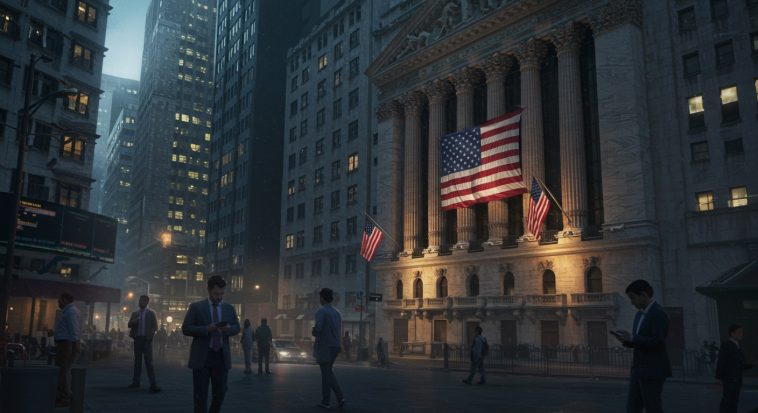The recent stock market rally that’s brought major indexes close to their record highs is pretty puzzling. After a rough spring that left many investors worried, the S&P 500 has bounced back surprisingly well, thanks to strong company earnings and growing hopes for potential interest rate cuts. However, rather than excitement filling the air, there seems to be a reluctant vibe among traders. It feels like instead of celebrating this uptick, many are watching with skepticism, arms crossed, rather than embracing the good news. It’s an interesting time to keep an eye on the market.
Wall Street Optimism, Main Street Caution
Even with the recent market bounce, many investors are still feeling cautious. It seems like both big institutional investors and everyday traders are taking a step back, preferring to wait things out.
Lina Moreno, the chief investment strategist at Horizon Analytics, pointed out that we’re experiencing one of the strongest rallies in a while, yet many aren’t convinced it’s the real deal. She noted that investors might be hesitant because they’ve faced too many disappointments over the last couple of years.
Research from SentimenTrader and Ned Davis shows that professional managers are still less exposed to stocks than usual. Hedge funds, mutual funds, and individual investors are only slowly taking on more risk. Data from Charles Schwab highlights that this kind of cautious approach doesn’t usually happen so close to peak market levels.
Mixed Signals from the Fed and the World Stage
It’s pretty clear why people are feeling uneasy right now. Inflation is still a concern, and the Federal Reserve hasn’t given us any solid guidance on when interest rates might go down. On top of that, there are new geopolitical issues coming up, like potential tariff threats if Trump gets back into office and ongoing unrest in the Middle East.
David Kim, who manages a portfolio at Vesica Capital, points out that uncertainty really shakes investors. He explained that while they can handle bad news if it’s expected, they struggle when the future is unclear.
This month’s Global Fund Manager Survey from Bank of America highlights this cautious vibe, showing that 28% of respondents have less risk exposure than usual, much lower than typical levels. Equity investments are also lagging behind their usual numbers.
A Rally Without Cheers
Not everyone is worried about the current market situation, though. Some experienced investors believe that this doubt could actually lead to more growth.
Kevin Gordon, a senior investment strategist at Charles Schwab, described what’s happening as a “pain trade.” He explained that as the market keeps climbing, people are anxiously waiting for a drop that just isn’t happening. This kind of situation often drives stock prices even higher.
Tom Lee from Fundstrat echoed this idea in a recent note. He thinks many investors aren’t recognizing the positive changes around us. For instance, trade policies are becoming easier to predict, the Federal Reserve seems more supportive, and even though consumer sentiment is still shaky, it’s improving.
“It’s surprising how close we are to all-time highs, yet most investors remain skeptical,” Lee pointed out. “This is one of the most disliked rallies I’ve ever seen.”
Cracks in Big Tech’s Armor, and What Comes Next
There’s an interesting shift happening in the market right now; it’s not just about the big tech companies anymore. Sure, Apple and Nvidia are still in the spotlight, but lately, stocks in areas like logistics, airlines, and other services that were struggling before have started to improve. Although sectors like freight and manufacturing still have some catching up to do, this change suggests a healthier overall support for stocks.
Gordon from Schwab mentioned that this rally is becoming more varied, which could actually make it stronger. On Wall Street, some believe the real danger isn’t being too optimistic, but rather being overly cautious.
Where Does the Market Go From Here?
Looking ahead, analysts are starting to adjust their forecasts upwards. After cutting their S&P 500 targets during the market dip in April, at least eight major firms have now upped their predictions. The new average year-end target is 6,100, suggesting there’s still room for growth.
However, things might get bumpy along the way. With unclear signals from central banks, various global political issues, and jitters about the upcoming elections, we can expect some volatility.
Yet, Moreno from Horizon Analytics finds a bright side. She pointed out that sometimes the most uncomfortable moments for investors can lead to strong market performance. “This rally might not be popular, but it’s not finished,” she noted.



